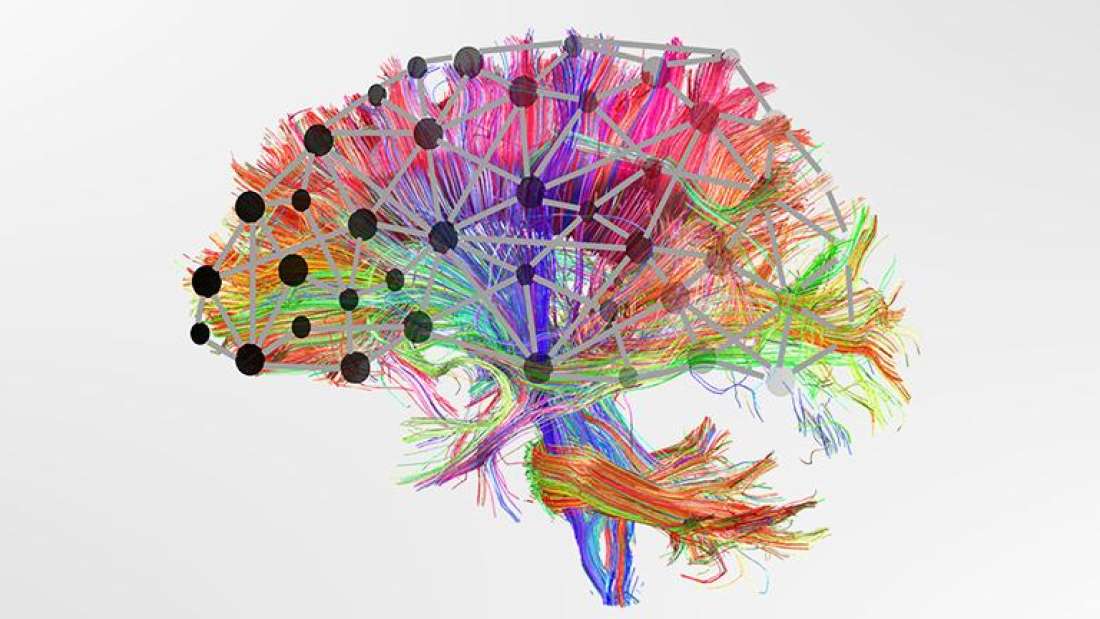学习困难与大脑的连接方式有关,而不是与特定的大脑区域有关
学习困难与大脑的连接方式有关,而不是与特定的大脑区域有关
Millions of children around the world suffer from learning difficulties, which include dyslexia and language processing disorder, and are linked to conditions like dyspraxia, ADHD, and autism spectrum disorder (ASD). It’s long been thought that specific learning difficulties can be traced to specific regions of the brain, but now, a study published in Current Biology has thrown doubt on this assumption, suggesting that learning difficulties are instead the result of how the brain is wired.
全世界有数百万儿童患有学习困难,其中包括诵读困难和语言处理障碍,并与运动障碍、多动症和自闭症谱系障碍(ASD)等病症有关。长期以来,人们一直认为特定的学习困难可以追溯到大脑的特定区域,但现在,发表在《当代生物学》上的一项研究对这一假设提出了质疑,认为学习困难是大脑如何连接的结果。

Rachel Baxter
It’s estimated that between 14 and 30 percent of children and adolescents worldwide have learning difficulties severe enough to require additional support. But the root of these difficulties and their associated conditions have long been hazy, and studies have generally focused on one specific diagnosis, like autism or ADHD (attention deficit hyperactivity disorder).
据估计,全世界有14%到30%的儿童和青少年有严重的学习困难,需要额外的支持。但是这些困难的根源和它们的相关情况长期以来一直是模糊不清的,研究通常集中在一种特定的诊断上,比如自闭症或多动症(注意缺陷多动障碍)。
To find out more, a team from the University of Cambridge collected data from hundreds of children with learning difficulties. They then fed the data from nearly 500 kids into an artificial neural network, which worked out that different children had different cognitive profiles. The team then used a method called “cross-profiling” to determine that these profiles were connected to learning difficulties. In addition to cognitive information, the neural network examined images of the children’s brains.
为了了解更多,剑桥大学的一个研究小组收集了数百名有学习困难的儿童的数据。然后,他们将近500名儿童的数据输入人工神经网络,计算出不同的儿童有不同的认知特征。然后,研究小组使用了一种叫做“交叉剖析”的方法来确定这些剖析是否与学习困难有关。除了认知信息,神经网络还检测了儿童大脑的图像。
The researchers only found a weak relationship between cognitive and brain profiles, suggesting that children with one specific cognitive difficulty don’t necessarily have similar brains. And those kids that have similar brains don’t all suffer from the same learning issues. Essentially, brain structure doesn’t seem to be able to explain learning difficulties.
研究人员只发现了认知能力和大脑特征之间的微弱关系,这表明有特定认知困难的儿童不一定有相似的大脑。那些大脑相似的孩子并不都有相同的学习问题。从本质上讲,大脑结构似乎无法解释学习困难。
However, the researchers then turned to the brain’s wiring. They mapped the connections within each child’s brain to see how strong they were. Some children’s brains were wired strongly around specific “hubs” in the brain, while others weren’t. The team found that the “hubbiness” of a child’s brain was strongly connected to their cognitive profile. Children with poorly connected brain hubs were more likely to have learning difficulties. So, it seems that learning difficulties aren’t so much to do with specific regions of the brain, but rather how the brain is wired up.
然而,研究人员随后转向大脑的线路。他们绘制了每个孩子大脑内部的连接图,看看他们有多强。一些儿童的大脑强烈地围绕着大脑中的特定“中枢”,而另一些则不是。研究小组发现,儿童大脑的“活力”与他们的认知能力密切相关。大脑中枢连接不良的儿童更有可能出现学习困难。因此,学习困难似乎与大脑的特定区域并没有太大关系,而是与大脑的连接方式有关。
However, it’s still unclear whether differences in brain connection are actually a cause of learning difficulties, and more research is needed to find out.
然而,大脑连接的差异是否真的是学习困难的原因还不清楚,需要更多的研究来发现。
"We know that the building blocks of brain ‘hubs’ are in place early in life, potentially even before birth," study author Dr Duncan Astle told IFLScience. "But we know little about the factors that shape their emergence over childhood. That’s what we want to learn about next. My hunch is that the brain wiring differences might be both cause and consequence of the learning difficulty. That is, some initial differences in organisation become reinforced over childhood, partly as a consequence of the child’s experience. Small initial differences in brain organisation snowball. But we need a lot more research before we know for sure."
研究作者邓肯·阿斯特尔博士在接受《IFLScience》采访时表示:“我们知道,构成大脑‘中枢’的积木在生命早期就已经存在,甚至可能在出生之前就存在了。但我们对影响他们童年成长的因素知之甚少。这就是我们接下来要学习的内容。我的直觉是,大脑线路的差异可能既是学习困难的原因,也是学习困难的后果。也就是说,一些最初的组织差异在儿童时期得到加强,部分是由于儿童的经历。大脑组织的微小初始差异就像滚雪球一样。但在我们确定之前,我们需要更多的研究。”
The findings suggest we need a rethink when it comes to how we look at the link between the brain’s structure and learning difficulties, and how we view specific diagnoses.
这些发现表明,我们需要重新思考如何看待大脑结构与学习困难之间的联系,以及如何看待具体的诊断。
“One of the key findings from the paper is that a child’s diagnostic ‘label’ does not correspond well to their cognitive difficulties," said Dr Astle. "So whilst diagnosis is an important milestone for children and families, the ‘label’ itself shouldn’t dictate the kind of support they receive. That is important, because at the moment support is mainly linked to diagnosis.”
阿斯特尔博士说:“这篇论文的一个重要发现是,儿童的诊断‘标签’与他们的认知困难并不相符。因此,虽然诊断对儿童和家庭来说是一个重要的里程碑,但‘标签’本身不应该规定他们得到的支持类型。这很重要,因为目前的支持主要与诊断有关。”


















